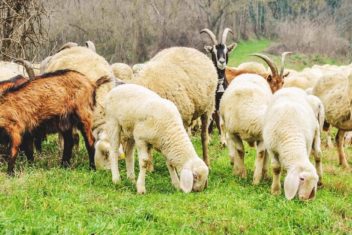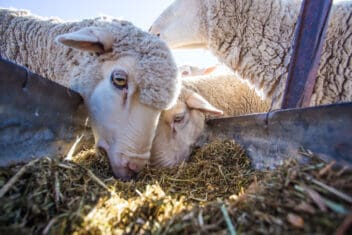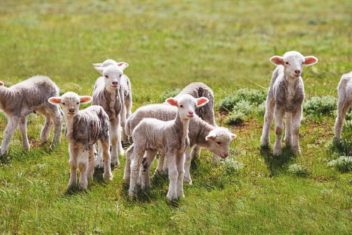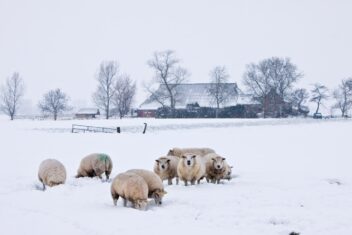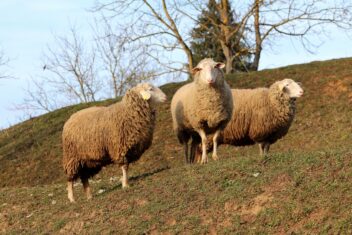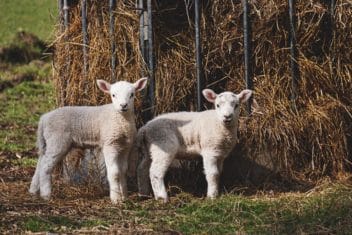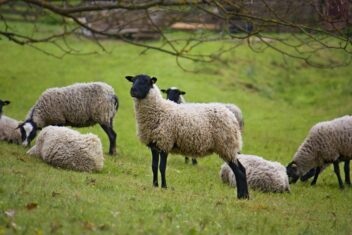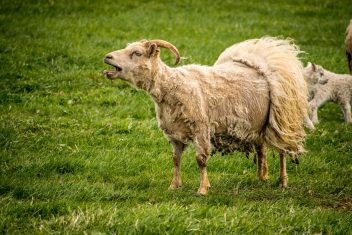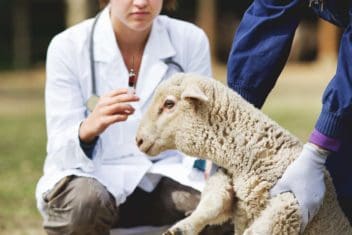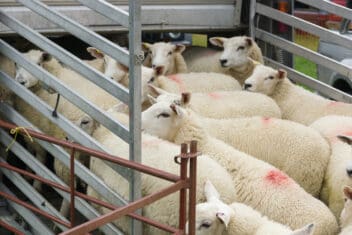When it comes to raising sheep, it appears just about everyone has their own opinion about which breed is best. Some say the Merino breed is the ideal option for small farms, while other people are adamant that nothing will do but the Icelandic.
However, when you are trying to select the right breed for you, you must consider a few factors. For instance, why do you want to raise sheep in the first place? Is it for meat, milk, or wool? Do you want to raise show animals? Perhaps you just want a few pets.
If you’re thinking of raising sheep for meat or wool, the Border Leicester breed is one you need to consider. This heavy, docile breed is great for families and has several strengths that make it the ideal choice for many farms.
Here’s what you need to know.
What is the Border Leicester Sheep Breed?
A dual-purpose sheep breed, the Border Leicester is typically raised for meat and wool. It is a polled (hornless) breed that has long wool and is native to Great Britain. However, it is also commonly raised in other sheep-producing regions like Australia and the US.
These sheep have long bodies (much longer than what you’d see on other sheep breeds) along with well-developed chests and ribs and a strong, wide back. They have black noses and unique ears that are large and upright. Their feet are dark and both their legs and head are free from wool.
History of the Breed
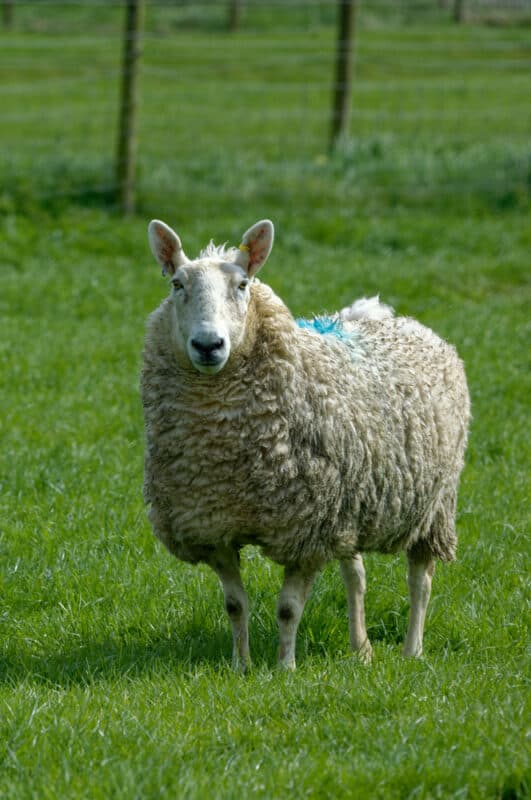
This breed first came on the market in 1767 in Northumberland, England. Its name comes from a combination of the sheep’s origin near the “border” that the region shares with Scotland along with the foundation stock of the animal being from the Dishley Leicester breed. The rams of this breed providing genetics along with other breeds like Teeswater and Cheviots.
There is a bit of variation in this breed since both Cheviot and Teeswater ewes were historically used to breed with Dishley Leicesters. The two variants are colloquially known as Redlegs and Bluecaps, but the two variants are quite similar. Redleg genetics are significantly more common in this day and age since this was the preferred variant for farmers in the 1800s.
There are also English or “Dishley” Border Leicesters available, too. These are the largest and have longer, heavier fleeces.
More often than not, Border Leicester rams are now crossed with Merino ewes. This offers all the benefits of excellent meat and wool production with the superior mothering characteristics of the Merino ewe.
Because of this, when you decide to raise Border Leicesters, but especially those crossed with Merinos, you’ll benefit from sheep that are great for meat and wool production and offer high fertility and excellent foraging abilities.
Sometimes the breed is crossed even further, with Border Leicester-Merino cross ewes mated to rams of short wool breeds, such as Southdown or Poll Dorset. This is usually done for meat production since this cross produces rams that grow quickly and with the ideal carcass quality.
In the US, the first breed association was formed in 1888, with another following shortly thereafter. The associations are the North American Border Leicester Association and the American Border Leicester Association.
Reasons to Raise Border Leicester Sheep
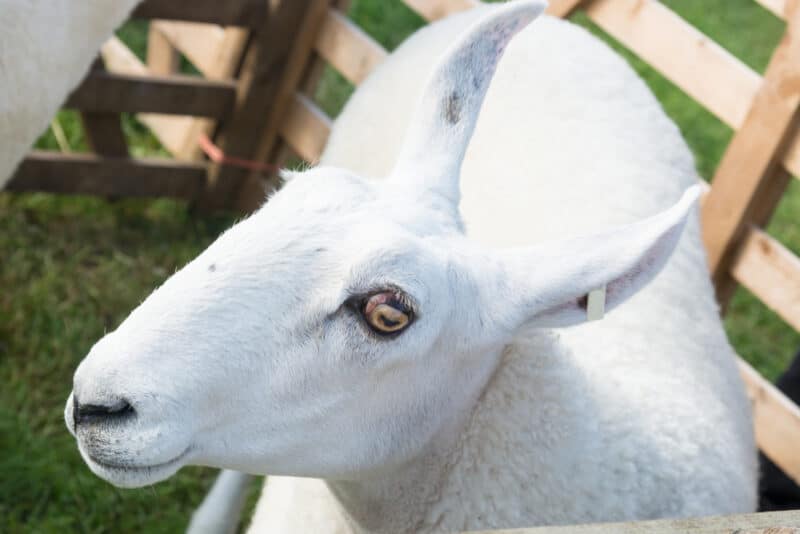
There are countless reasons to consider raising Border Leicester sheep. Here are just a few.
1. Meat Production
Border Leicester sheep are known for being excellent meat sheep. Mature rams weigh well over 325lbs, in most cases, while ewes can easily tip the scales at 250lbs or more. Lambs reach maturity quickly, yielding high-quality meat that is perfect for the market or your own dinner table.
In fact, when fed for maximum gains, lambs can reach 110lbs – the ideal size for slaughter – in less than 5 months.
2. Wool
Border Leicester sheep are often kept for wool. They typically produce white wool which is long and crimped, about 32-38 microns. This is ideal for producing yarn that can be processed into medium or heavy-weight garments.
Spinners prize the wool from Border Leicesters because of its crimp and its overall luster and quality.
If you choose to raise these sheep for wool, there are a few characteristics you’ll appreciate. For one, they yield about 4-7lbs each of wool per shearing. Yearlings, of course, has the highest wool yields. You will normally need to shear these sheep twice a year, but we know them for being easy to shear since the head and legs don’t have any wool to deal with.
3. Fertility and Mothering Abilities
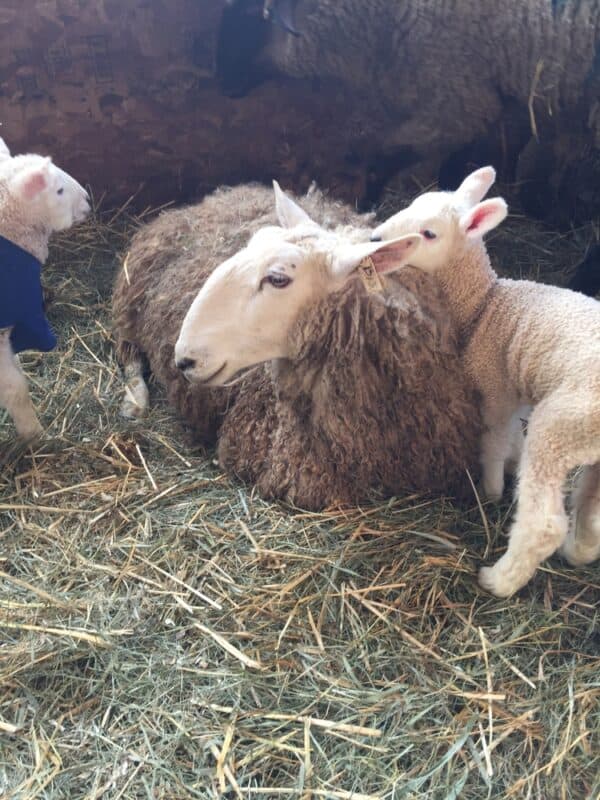
Ewes of this breed are some of the best when it comes to fertility and their overall capabilities as mothers. Most ewes will have either 1 or 2 lambs per lambing, and they are hardy and easy to care for with few medical problems to contend with.
If you’re looking for a ewe-lamb pair that won’t require a lot of intervention at lambing time, this is the one to consider. Ewes are also reliable milk producers for their lambs, although they typically aren’t raised for milking on a commercial scale.
4. Hardiness
From lambs to ewes, Border Leicester sheep are known for being quite hardy. The lambs are active and vigorous when they are born, putting on quite a lot of weight in the first 4 months alone. They handle both warm and cool weather with ease.
In fact, Border Leicester lambs have high survival rates even when they’re first born in harsh climatic conditions.
This is because they are born with wool that is much thicker than that of lambs from other breeds.
5. Foraging Abilities
Border Leicesters are good foragers and can generally survive on less feed than other breeds.
Although they will grow best when provided with free choice hay, pasture, and water, they can survive on poor quality forage as well.
6. Docility
Another reason people raise these sheep is that they are remarkably calm. They are easy to handle despite being alert and aware of their surroundings. While they may handle human interaction well, their alertness also lends itself well to being aware of predators. You can really have the best of both worlds with these sheep.
Special Considerations

There are very few considerations you need to make when raising Border Leicester sheep. In fact, this breed is one of the easiest to manage when it comes to just about every aspect of shepherding, from feeding to handling, shearing, and everything in between. They are hardy to most climates and do well with guardian animals.
The only slight disadvantage to note when raising Border Leicester is that some studies have shown that they can be slightly more prone to certain diseases. These include thin ewe syndrome mastitis, arthritis, dyspnea, and pneumonia.
However, these diseases (except mastitis) are extremely rare in any flock. This should not discourage you from selecting Border Leicesters for your homestead.
How to Raise Border Leicester Sheep
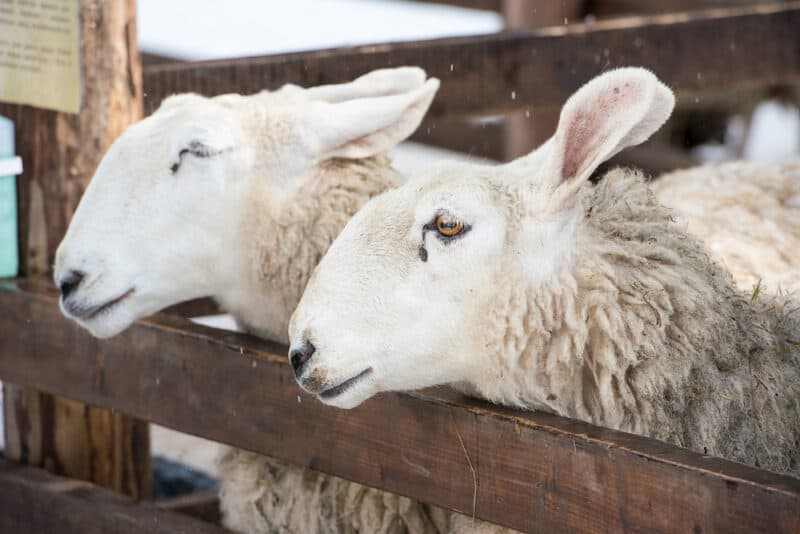
Raising Border Leicester sheep is not unlike raising sheep of any other breed.
You will have to erect reliable fencing around your sheep that is at least 4-feet high. Although Border Leicester sheep are not escape artists by any means, a good fence can keep out curious predators.
Of course, sheep evolved solely on natural pasture. Still, providing grain and supplemental hay, particularly during the winter months, is essential. You can read more about feeding sheep in winter here. Clean water and a good mineral supplement are also vital.
Are Border Leicester Sheep Right For Me?
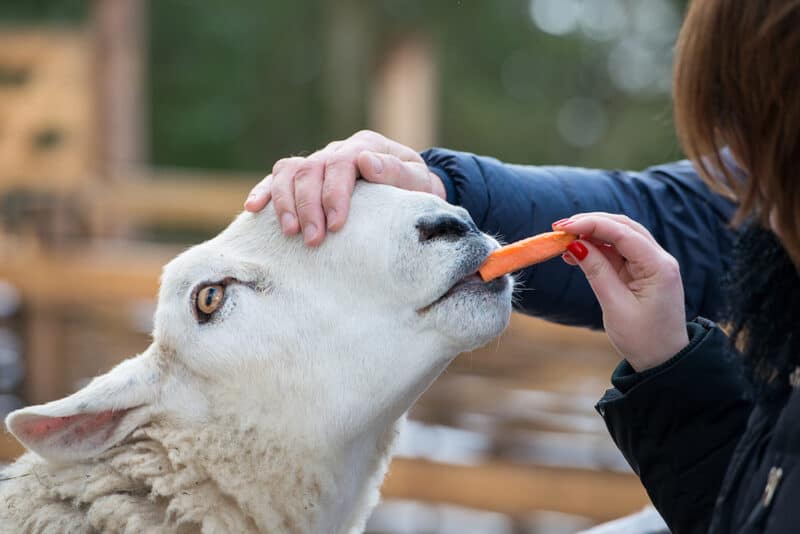
After the 1970s, when there was a dramatic increase in the popularity of hand-spinning and related crafts, Border Leicester became markedly more common in the US. Because of this, they are relatively easy to find if you wish to start a flock of your own.
These rapidly growing, high-quality sheep are perfect if you are interested in raising a flock of meat or wool producers – consider giving them a try if you’re still on the hunt for the perfect breed.

